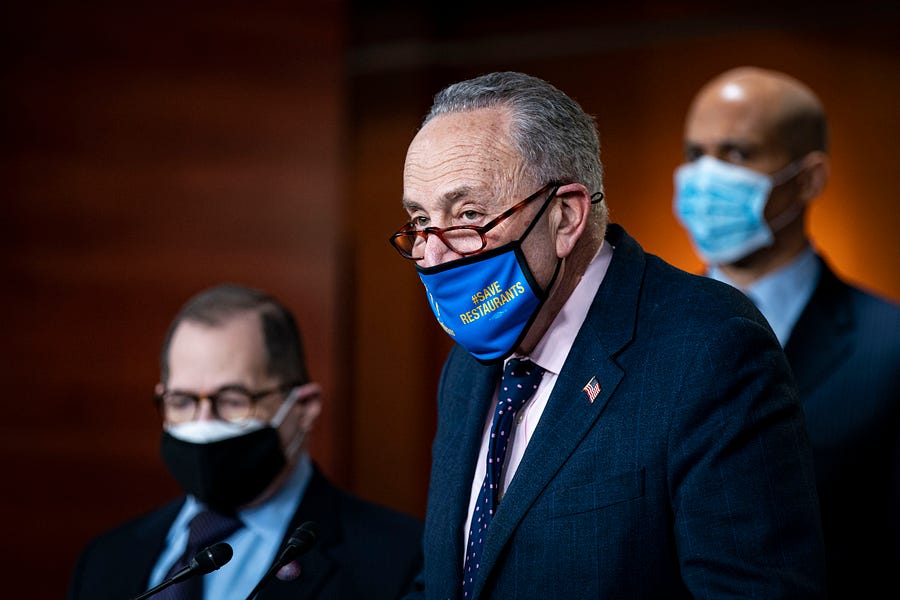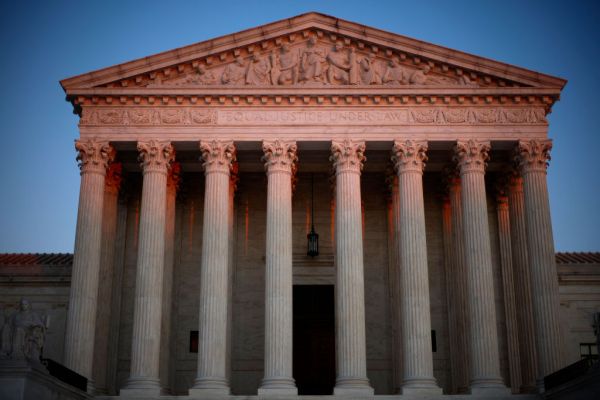Let’s begin with a simple question. What’s the purpose of nondiscrimination law? As a general matter, such laws are not designed to eliminate all discrimination on the basis of the protected characteristic. Instead, the desire is to eliminate invidious discrimination. The phrase “invidious discrimination” is critical. It’s a legal term of art that generally means “a classification which is arbitrary, irrational and not reasonably related to a legitimate purpose.”
Indeed, the effort to eliminate all discrimination based on protected characteristics can result in unjust and nonsensical outcomes. Do we want laws holding that separate male and female lockers and showers are per se unlawful? Or should there be no legal preference for female guards to perform strip searches of female prisoners? Should we end the distinction between male and female sports and simply say that the best athlete gets the spot? In each of these circumstances, a truly sex-blind system would actually hurt women—achieving a result the opposite of the law’s intent.
On the other hand, we also know what invidious sex discrimination looks like. We see it in hostile environment sexual harassment, when women are subjected to gross, sexist abuse in the workplace. We see it when employers refuse to hire female workers because they “might get pregnant.” We see it in quid pro quo sexual harassment, when women are coerced into trading sex for promotions or pay raises. In those circumstances, nondiscrimination law stands as a firewall against systemic injustice and exploitation.
A truly effective and just nondiscrimination law does its best to navigate the distinction between invidious and benign (or even necessary) acts of discrimination. It recognizes the limits of the state’s interests, and it pulls back when it conflicts with fundamental constitutional rights.
And this brings me to my problems with the Equality Act, the Biden Administration’s signature legislative initiative to formalize protections for LGBT individuals in American civil rights law, which the House passed on a near-party-line vote today. The act would amend federal civil rights laws to include explicit protections for discrimination on the basis of sexual orientation and gender identity, but it has provisions that sweep too broadly—far beyond any reasonable conception of invidious discrimination. It risks creating injustices for other categories of Americans who are also protected by nondiscrimination law.
The Equality Act has two core substantive flaws. First, it renders virtually all biological sex distinctions unlawful, regardless of context. And second, it explicitly attempts to diminish religious liberty protections for religious individuals and institutions by stating that the Religious Freedom Restoration ACT (RFRA) “cannot provide a basis” for challenging the “application or enforcement” of the act. Let’s take these concerns in turn.
Even when we share the goal of treating trans Americans with dignity and respect, biological distinctions still matter, and disregarding them can be unjust and even discriminatory on other grounds. Let’s consider two examples. In a women’s locker room, exposure to male genitalia is generally considered to be indecent exposure or an act of harassment. Is the act cleansed of its harm if the penis belongs to a trans female? In sports, there are biological distinctions between girls and trans girls even if trans girls have received treatments that reduce testosterone or other male characteristics that give men athletic advantages over women.
I’m not one who says that the Equality Act will “destroy women’s sports.” That’s hyperbole. After all, the NCAA has had a trans-athlete policy since 2011, and women’s sports are robust and intact. But it’s still highly likely that the Equality Act will create and mandate unnecessary individual injustices.
Moreover, while there may not be many trans women who seek to force, for example, a female beautician to wax male genitalia or who wish to spend the night in overnight quarters reserved for women only in a battered women’s shelter, the Equality Act will again create and mandate unnecessary individual injustices.
The attack on religious freedom is also unjust and unnecessary. It’s unnecessary because existing religious liberty doctrine isn’t incompatible with the Civil Rights Act. For example, in the 1968 case Newman v. Piggie Park, the Supreme Court held that a religious liberty defense to racial discrimination at a chain of drive-in restaurants and sandwich shops was “patently frivolous.”
Secular employers and establishments cannot escape the Civil Rights Act simply by citing divine sanction for their acts of discrimination. After all, RFRA applies to federal civil rights law now, and federal civil rights enforcement is robust. Nondiscrimination law can coexist with RFRA. It has coexisted with RFRA. Congress does not need to degrade religious liberty to expand civil rights.
But if Congress and the Biden administration do limit RFRA’s scope, it may well invite a largely pointless but immensely divisive wave of litigation against those religious institutions that maintain policies and practices that are consistent with the traditional doctrines of their faith. With or without RFRA, the Supreme Court is on a decade-long streak of solidifying constitutional religious liberty protections, and when the Equality Act conflicts with the Constitution, the Equality Act will fall.
Indeed, there’s a case this Supreme Court term—Fulton v. City of Philadelphia—that will tell us a great deal about the applicability of nondiscrimination law to religious institutions. I’ve written about Fulton before:
The petitioners in Fulton seek protection from a Philadelphia rule that required a Catholic foster care agency to provide written endorsements for same-sex couples (in violation of church teaching) as a condition of participating in the city’s foster care system.
In addition, the petitioners are asking the court to revisit Employment Division v. Smith, a 1990 Supreme Court opinion that substantially restricted the strength and scope of the Free Exercise Clause. If the petitioners prevail, it could well represent the most significant advance for religious liberty in decades.
The Fulton case is likely to add to a pile of law and precedent that, among other things, protects the right of religious employers to impose religious litmus tests on their employees, exempts religious employers from nondiscrimination statutes when hiring and firing “ministerial” employees, grants religious educational institutions the right to exempt themselves from Title IX, grants religious organizations a right of equal access to public funds and public facilities, and protects Americans from discrimination on the basis of religion in the workplace.
It is possible to protect LGBT Americans from invidious discrimination while still preserving religious liberty and recognizing material biological distinctions. Indeed, existing civil rights law recognizes a concept called a “bona fide occupational qualification” (BFOQ) which allows for discrimination on the basis of sex, religion, or national origin when discrimination may be “reasonably necessary [for] carrying out a particular job function in the normal operation of an employer’s business or enterprise.”
(For an example of the legally valid use of sex as a BFOQ, I’d urge you to read Dothard v. Rawlinson, where SCOTUS upheld an Alabama rule limiting “contact positions” in Alabama’s state prisons to male prison guards in part because women were deemed a potential security risk in an often-violent male-dominated space. )
A sensible BFOQ regime would allow employers to consider biological distinctions when drawing those biological distinctions is “reasonably necessary” for the particular job function. A similar regime could exist for facilities like locker rooms and showers or for activities like athletics. And don’t think that recognizing biological distinctions would create discriminatory exceptions that swallow the nondiscrimination rule. In practice, BFOQs are narrowly drawn and must be justified by substantial evidence.
In its effort to erase legally recognizable biological sex distinctions, even when those distinctions are both real and material to the relevant employment or activity, the Equality Act goes beyond the legitimate scope and purpose of nondiscrimination law. It strikes at actions that are not invidious, that are not “arbitrary” or “irrational.” It is, quite simply, far too broad.
One more thing …
Your must-read assignment of the day is this remarkable story from Michael Powell in the New York Times. It’s centered around an alleged racial incident at Smith College in Massachusetts. It begins like this:
In midsummer of 2018, Oumou Kanoute, a Black student at Smith College, recounted a distressing American tale: She was eating lunch in a dorm lounge when a janitor and a campus police officer walked over and asked her what she was doing there.
The officer, who could have been carrying a “lethal weapon,” left her near “meltdown,” Ms. Kanoute wrote on Facebook, saying that this encounter continued a yearlong pattern of harassment at Smith.
“All I did was be Black,” Ms. Kanoute wrote. “It’s outrageous that some people question my being at Smith College, and my existence overall as a woman of color.”
Kanoute’s allegations were covered from coast to coast, but there was one problem—the evidence didn’t support her story:
Less attention was paid three months later when a law firm hired by Smith College to investigate the episode found no persuasive evidence of bias. Ms. Kanoute was determined to have eaten in a deserted dorm that had been closed for the summer; the janitor had been encouraged to notify security if he saw unauthorized people there. The officer, like all campus police, was unarmed.
Smith College officials emphasized “reconciliation and healing” after the incident. In the months to come they announced a raft of anti-bias training for all staff, a revamped and more sensitive campus police force and the creation of dormitories—as demanded by Ms. Kanoute and her A.C.L.U. lawyer—set aside for black students and other students of color.
But they did not offer any public apology or amends to the workers whose lives were gravely disrupted by the student’s accusation.
This is a tale of how race, class and power collided at the elite 145-year-old liberal arts college, where tuition, room and board top $78,000 a year and where the employees who keep the school running often come from working-class enclaves beyond the school’s elegant wrought iron gates. The story highlights the tensions between a student’s deeply felt sense of personal truth and facts that are at odds with it.
Read the entire thing. It’s a remarkable piece of reporting, but here’s a warning—it may make your blood boil.
One last thing …
I sincerely apologize. I’ve written an entire week’s worth of newsletters without attaching the new trailer of the Snyder Cut of Justice League. Inexcusable. Watch this and tell me it’s not glorious.







Please note that we at The Dispatch hold ourselves, our work, and our commenters to a higher standard than other places on the internet. We welcome comments that foster genuine debate or discussion—including comments critical of us or our work—but responses that include ad hominem attacks on fellow Dispatch members or are intended to stoke fear and anger may be moderated.
With your membership, you only have the ability to comment on The Morning Dispatch articles. Consider upgrading to join the conversation everywhere.